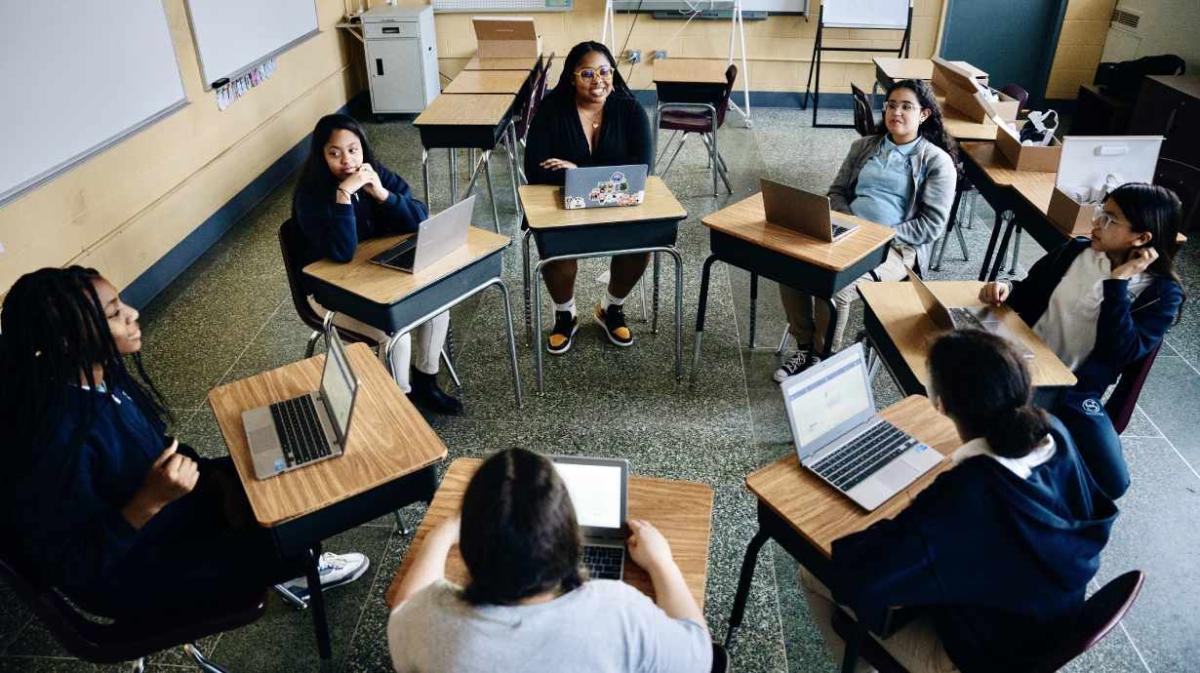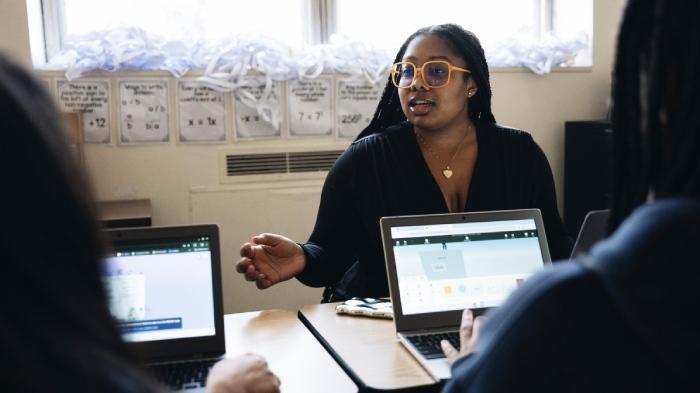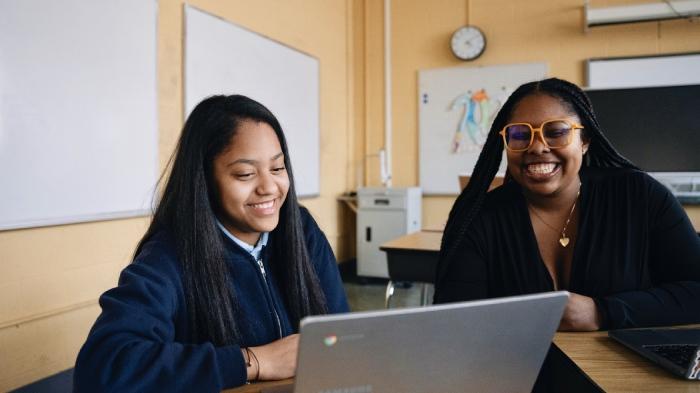Bringing Immersive Learning to Life With Tech-Centric Lesson Plans
How Verizon Innovative Learning HQ helps a Rhode Island after-school program teach with AR, VR, and more.
At Sophia Academy, a middle school in Providence, Rhode Island, six eager students gather after school twice a week to explore immersive technology and master new concepts in STEM.
“They get most excited about using the VR headsets to play games,” says Imani Dukes, an instructor with the after-school program where the students meet. “I don’t blame them either — I would be, too!”
The after-school program is provided by Winner’s Circle XR Academy, a nonprofit that aims to empower students in underserved communities through work with advanced technology and dynamic STEAM education. Juan Rodriguez, Winner’s Circle founder and executive director, incorporates Verizon Innovative Learning HQ’s free lesson plans into the nonprofit’s curriculum, providing STEM education to over 200 Rhode Island students every school year. These resources are part of Citizen Verizon’s goal to provide 10 million youth with digital skills by 2030, offering educators nationwide with free access to hundreds of tech-focused lessons across all subjects that innovate classroom learning.
Rodriguez, who is also a high school teacher, says the Verizon Innovative Learning HQ materials allow him to better tailor his lessons to the needs of his students. He is using Immersive Media VR-specific lessons in his curriculum, modifying to celebrate students’ identities and cultures. The lessons teach middle school students digital storytelling, interactive experience creation, and AR and VR design through four hands-on units.
“We have some students who might be engaging with this technology for the first time, and they’re not sure how to approach it. But after they [get started], they’re excited. Their eyes light up,” Rodriguez says. “We’re teaching students how to become content creators. We’re letting them know, ‘You can create your own story — you don’t have to let someone else tell your story.’”
Rodriguez recalls a past student who, during the VR lesson, shared his story through an immersive experience based on a family trip to Cambodia.
“He added all these different elements — the animals he saw there, the temples — and he brought the characters to life,” Rodriguez explains. “He shared this with his peers, and now his peers are learning about Cambodia. They get to see what Cambodia looks like from his perspective, and it’s fully interactive.”
Being able to create using technology was one of the main draws for Winner’s Circle instructor and mentor Imani Dukes to participate in the nonprofit’s after-school program when she herself was in high school. Now, as a college junior studying computer science, Dukes is sharing her interest in STEM (she plans to go into gaming) with the students she mentors at Sophia Academy.
“I was eager to become an instructor so I could spread the word about this technology, especially to girls of color,” Dukes says. “There are only a few who look like me in the gaming industry, so it is my goal to discuss how important and intriguing technology is to the younger generation. I love being able to mentor the students and see them grow and succeed in life.”
At Sophia Academy, Dukes says, “the students are ecstatic to be in the program, learning something new about AR and VR technology and applying that knowledge to their own experiences, all while having a safe space and non-judgement zone to talk and be themselves.”
One of these students is seventh grader Herianna Frias Garcia. She has been active in the program, also participating in the Winner’s Circle MindBlast XR Hackathon, a competition where middle school students in Rhode Island use XR technology to bring awareness to social justice issues.
“My favorite part of the program is learning more about [the things] I’m interested in,” Frias Garcia says, highlighting her enthusiasm for 3-D modeling and the immersive world of VR. “I like seeing all the games people have made.” The prospect of using VR technology to bring her creations to life has also sparked a dream for her future. “I would like to design buildings using VR,” she says.
Through the use of innovative technology, Verizon Innovative Learning HQ lessons, and creative methods of engagement, these educators hope to both cultivate and diversify the future of STEM, ensuring that students like Frias Garcia are equipped with the skills and opportunities needed to thrive in the digital economy.
“It’s rewarding to see our efforts empower students, especially those from underrepresented backgrounds, to explore this industry and contribute to the next generation,” Rodriguez says. “At Sophia Academy, we're observing that the students feel empowered. Their mentor is helping them build confidence, fostering a belief that they can be successful in any STEM career they choose to pursue.”
To access free learning apps, lesson plans and professional development courses aligned to microcredentials, visit Verizon Innovative Learning HQ.


![According to Juan Rodriguez, Winner’s Circle XR Academy founder, the Verizon Innovative Learning Immersive Media lessons “serve as an excellent introduction for students to the design-thinking process and allows them to explore projects related to [sustainability].” Photo credit: Kieran Kesner People using VR](/sites/default/files/styles/carousel_2x/public/images/2-sophia-academy_Verizon_041724.jpeg)



